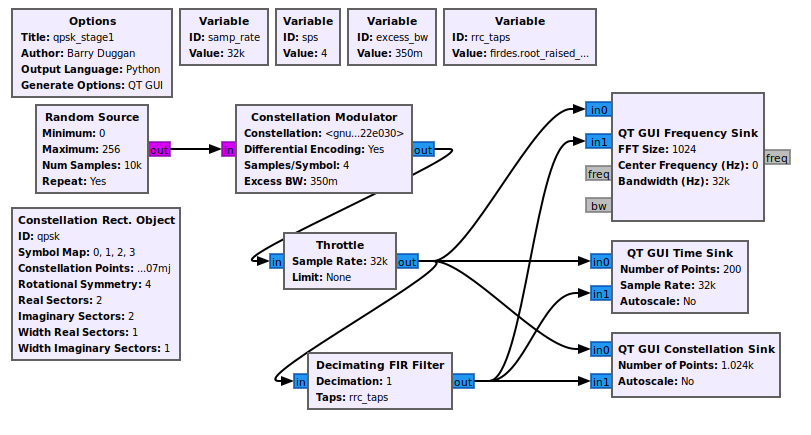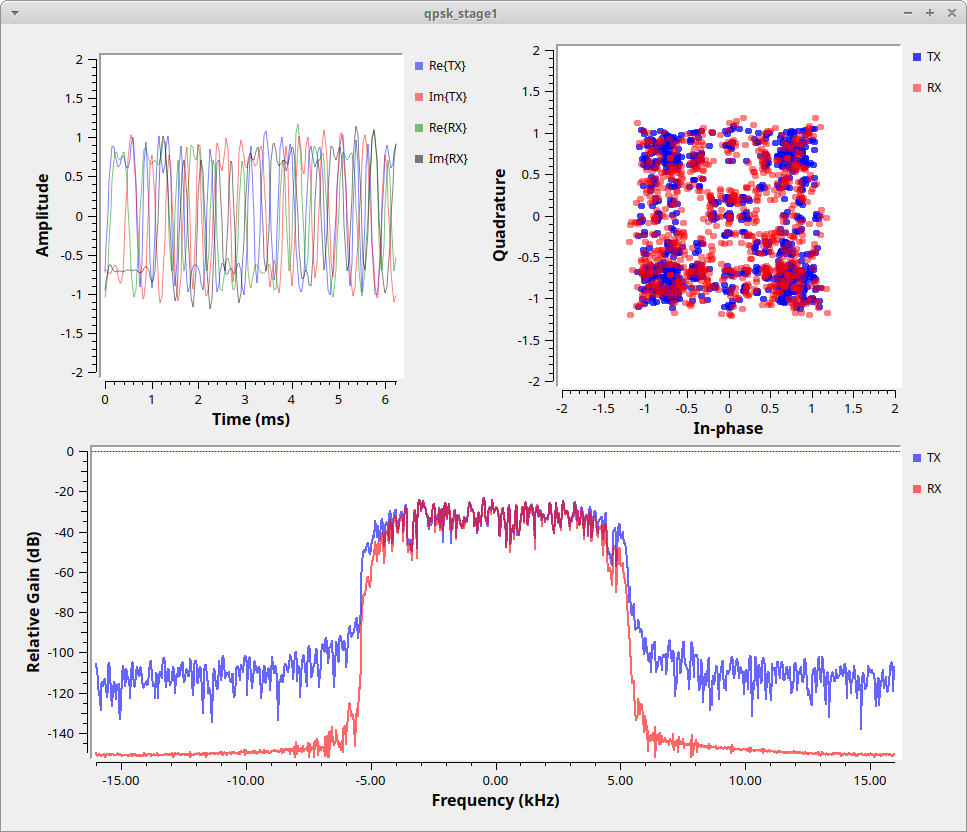Matched Filter and Intersymbol Interference
Objective
In this experiment, we will observe the effects of up-sampling and filtering through a QPSK constellation diagram, and explore how to use matched filters to eliminate intersymbol interference (ISI).
System architecture file: Qpsk_stage1.grc
Steps and Instructions
- Send random QPSK signals, the principle is the same as the previous unit.
- Use
Decimating FIR Filterto receive the transmitted QPSK signal. The FIR usesfirdes.root_raised_cosine(1.0, samp_rate, samp_rate/sps, excess_bw, 11*sps)to generate the coefficients of the Root Raised Cosine (RRC) filter. - Observe the time domain, frequency domain and constellation diagram characteristics of the signal.
System Simulation


- At the receiver, we eliminate ISI by using another RRC filter.
- When the transmitter and receiver each use an RRC filter, the convolution result of the two RRC filters is a Raised Cosine filter (a type of Nyquist filter).
- Utilizing this property, we can use an RRC filter at the receiver to minimize ISI.
Additional Notes
Principle of Matched Filter
Matched filters are designed to maximize the signal-to-noise ratio (SNR) of a signal. In digital communications, when a transmitted signal passes through a specific filter (such as an RRC filter), the receiver uses a matched filter (i.e., a filter with the same characteristics) to process the signal, which can effectively suppress noise, reduce ISI, and improve the signal decoding accuracy.
RRC Filter and Nyquist Filter
- RRC Filter: Has a square root pulse response, commonly used at both the transmitting and receiving ends. Its main characteristic is that it can control bandwidth while having zero crossings at specific sampling points, reducing ISI.
- Nyquist Filter: When the transmitter and receiver each use an RRC filter, their convolution result is the Nyquist filter, which can completely eliminate ISI and achieve optimal data transmission performance.
In practical applications, choosing appropriate filters and parameter settings (such as Excess BW value) is crucial for balancing bandwidth utilization and ISI suppression. Through reasonable design and configuration, the performance and reliability of digital communication systems can be significantly improved.
Exercise 2
Search and learn about the characteristics of Nyquist filters, observe their pulse response and frequency domain characteristics, and compare them to the RRC filters in this experiment.
